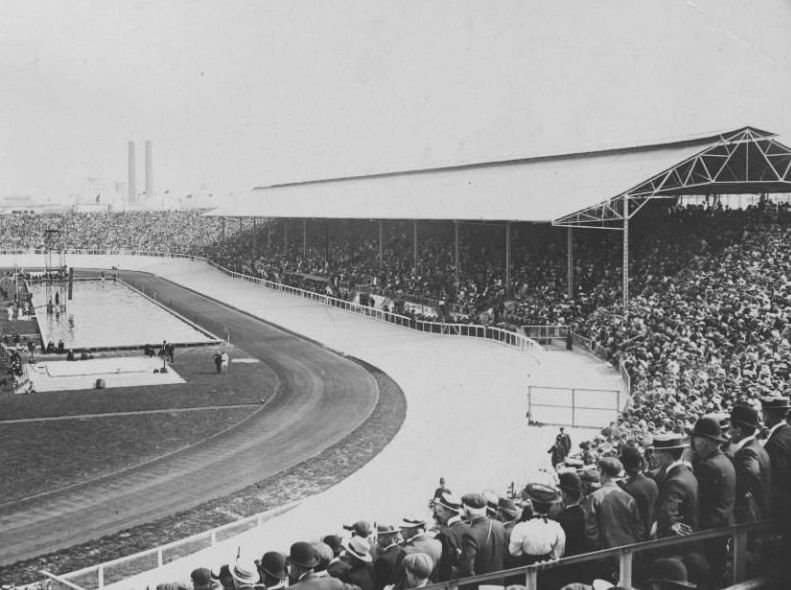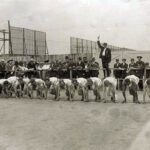The second modern Olympic competition was relegated to a sideshow of the World Exhibition, which was being held in Paris in the summer of 1900. Pierre de Coubertin, founder of the modern Olympics and president of the International Olympic Committee (IOC), lost control of his hometown Games to the French government. The Games suffered from poor organization and marketing, with events conducted over a period of five months in venues that often were inadequate. The track-and-field events were held on a grass field that was uneven and often wet. Broken telephone poles were used to make hurdles, and hammer throwers occasionally found their efforts stuck in a tree. The swimming events were contested in the Seine River, whose strong current carried athletes to unrealistically fast times. There was such confusion about schedules that few spectators or journalists were present at the events. Officials and athletes often were unaware that they were participating in the Olympics. See Sidebar: Margaret Abbott: A Study Break.
- Sports at the 1900 Olympics
- Aquatics
- Swimming
- Water Polo
- Archery
- Athletics (Track and Field)
- Basque Pelota (only appeared in 1900 & 1924)
- Cricket (first and only Olympic appearance until 2028)
- Croquet (first and only Olympic appearance)
- Cycling (Track and Road)
- Equestrian (First Olympic appearance)
- Jumping
- Polo
- Fencing
- Football (Soccer) (First Olympic appearance)
- Golf (Last appearance until its return in 2016)
- Gymnastics
- Jeu de Paume (Similar to real tennis, only appeared in 1908 after this)
- Rowing
- Rugby Union (Returned in 1920 & 1924; modern Rugby Sevens reintroduced in 2016)
- Sailing
- Shooting
- Tennis
- Tug of War (Also held in later Games until 1920)
football

Football is the world’s most popular ball game in numbers of participants and spectators. Simple in its principal rules and essential equipment, the sport can be played almost anywhere, from official football playing fields (pitches) to gymnasiums, streets, school playgrounds, parks, or beaches. Football’s governing body, the Fédération Internationale de Football Association (FIFA), estimated that at the turn of the 21st century there were approximately 250 million football players and over 1.3 billion people “interested” in football; in 2010 a combined television audience of more than 26 billion watched football’s premier tournament, the quadrennial monthlong World Cup finals.
cricket
Cricket is played with a bat and ball and involves two competing sides (teams) of 11 players. The field is oval with a rectangular area in the middle, known as the pitch, that is 22 yards (20.12 metres) by 10 feet (3.04 metres) wide. Two sets of three sticks, called wickets, are set in the ground at each end of the pitch. Across the top of each wicket lie horizontal pieces called bails. The sides take turns at batting and bowling (pitching); each turn is called an “innings” (always plural). Sides have one or two innings each, depending on the prearranged duration of the match, the object being to score the most runs. The bowlers, delivering the ball with a straight arm, try to break (hit) the wicket with the ball so that the bails fall. This is one of several ways that the batsman is dismissed, or put out. A bowler delivers six balls at one wicket (thus completing an “over”), then a different player from his side bowls six balls to the opposite wicket. The batting side defends its wicket.



